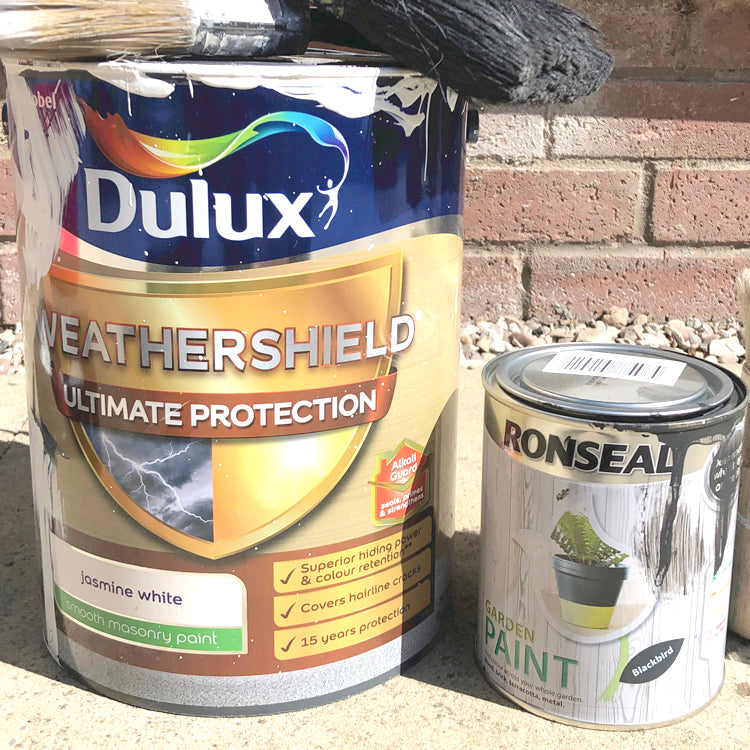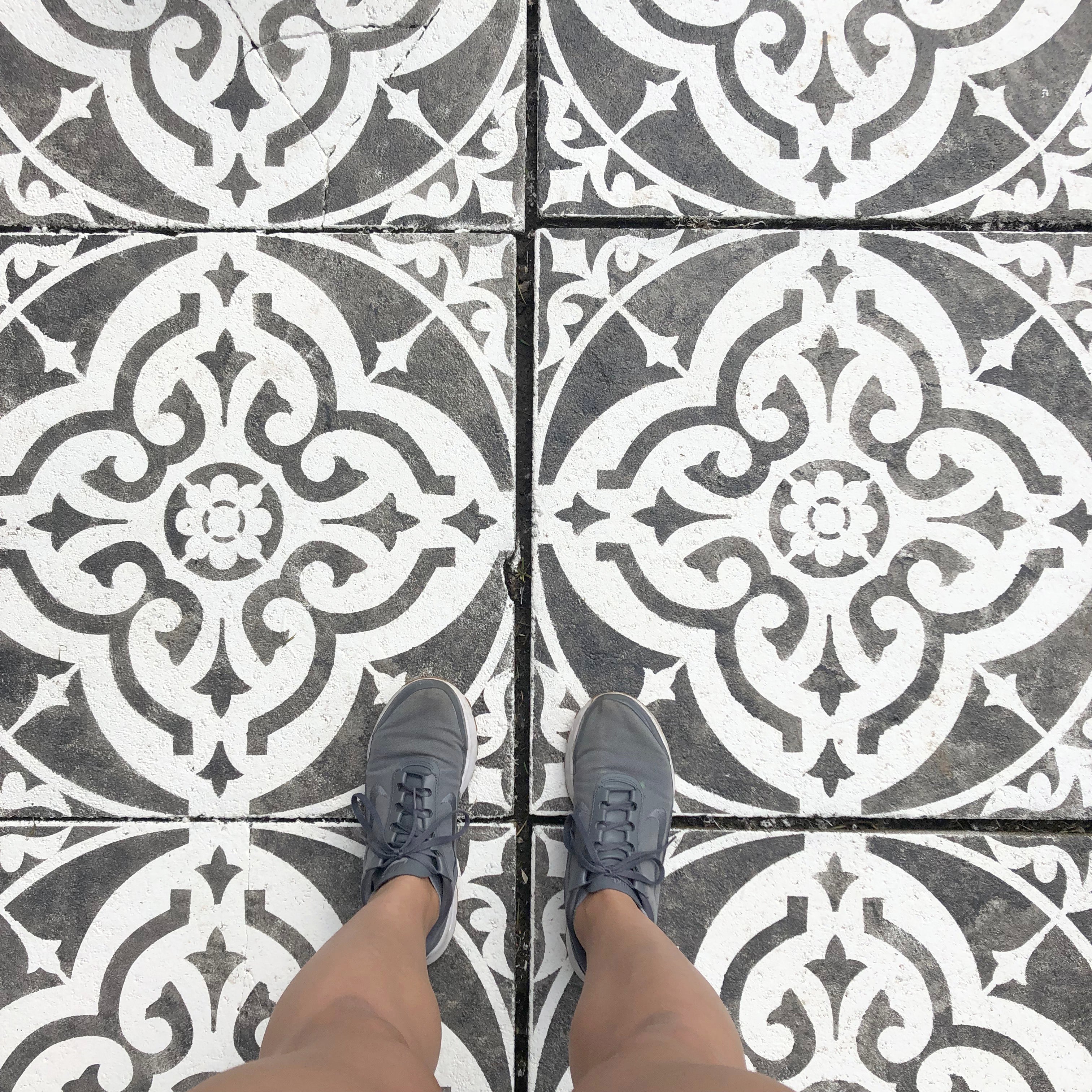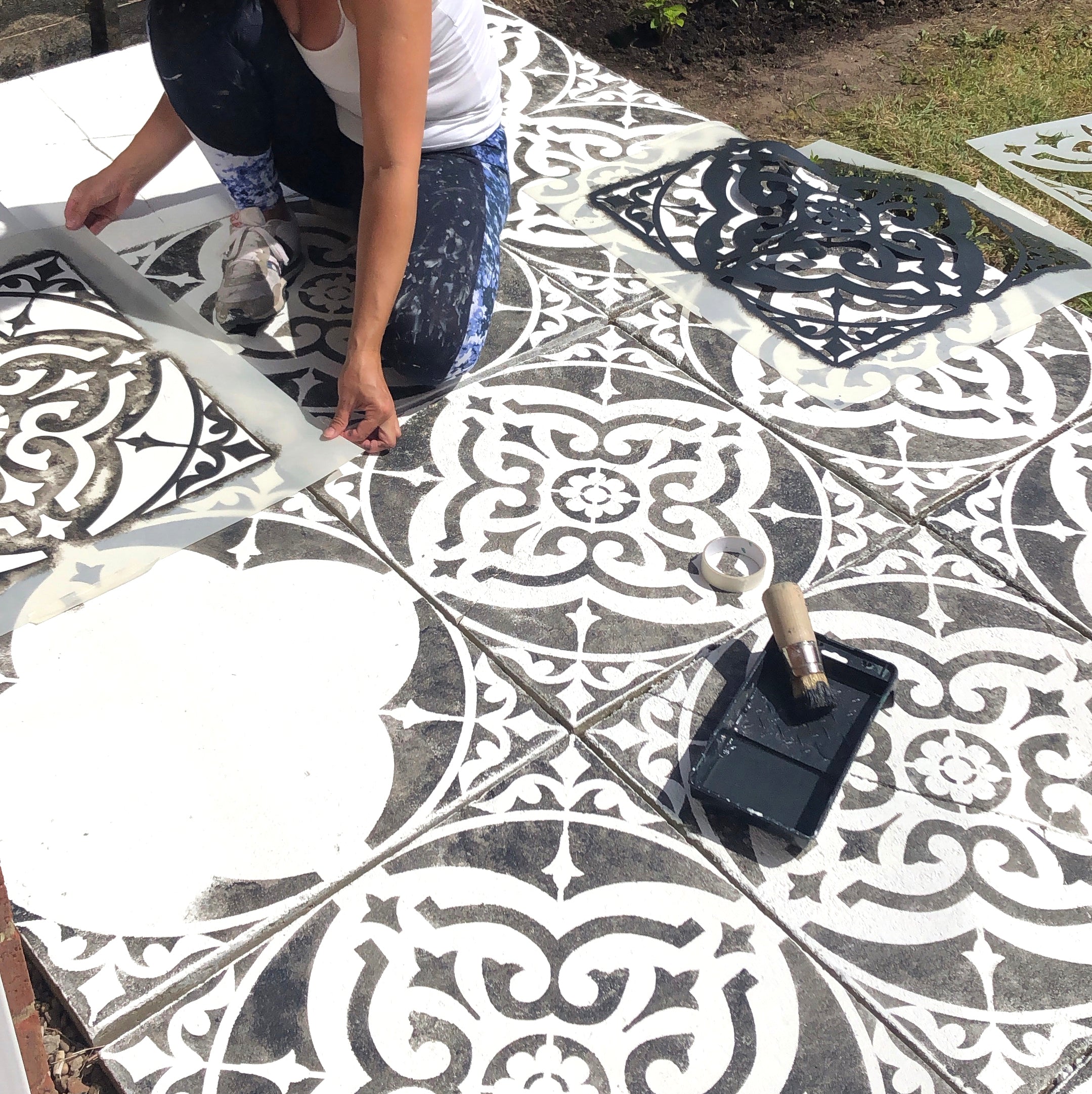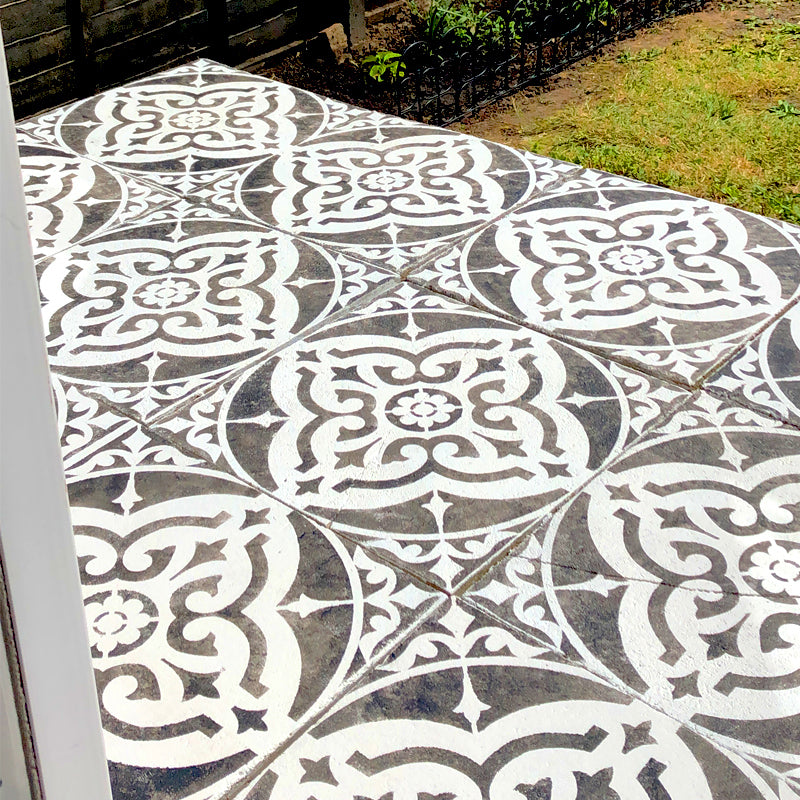PATIO PAINT ADVICE
One of the biggest questions we get asked is "What is the best paint for patios?" No one wants to graft for hours to create a stenciled masterpiece only for it to chip and peel away. But the truth is the type or brand of paint you decide to use is only part of the puzzle.
-

PREP WORK
Before you even THINK about the paint you're going to use, you need to power wash your surface. Not scrub with soapy water. Mopping won't work. You need to POWER WASH your patio.
-

READ THE TIN - TWICE!
You can use the best paint in the world - and still have durability issues - if you don't follow the instructions on the tin. You want to be looking out for temperature, time between coats and total curing time.
-

WEATHER
You need hot sunny days and warm summer nights. We used Dulux Weathershield for our projects and they recommend working in dry conditions above 10 degrees. So check the weather forecast before you start your project, and make sure to check nightly temperatures too.
-

CURING TIME
Slow and steady wins the race! You will need 2-3 coats of base colour, don't be tempted to rush this step, make sure you let each coat dry for the recommended amount of time. Most masonry paints need at least 4 hours drying between coats. This is key for durability.
-

APPLICATION
Masonry paint is a thicker consistency than standard water based paint, so it is important to apply thin coats for the best results. Thick layers will not cure as well and will be more likely to lift and peel. We found that a brush works much better on rough textured concrete. But if your patio is smooth then you can get away with using a roller.
-

MAINTENANCE
If you follow the previous steps, you will get years out of your project.
Here are some project examples of patios that have stood up to UK winters.
But understand that anything painted will eventually need a touch up.
Just like walls and woodwork, your patio will see some wear and tear over the years to come, and it will need some TLC from time to time.
Everyone has different priorities when it comes to choosing paint. From pricing and colour options to tin size and paint finish. Thankfully there are so many amazing brands out there to choose from. We have put together tried and tested paints with customer project examples.






